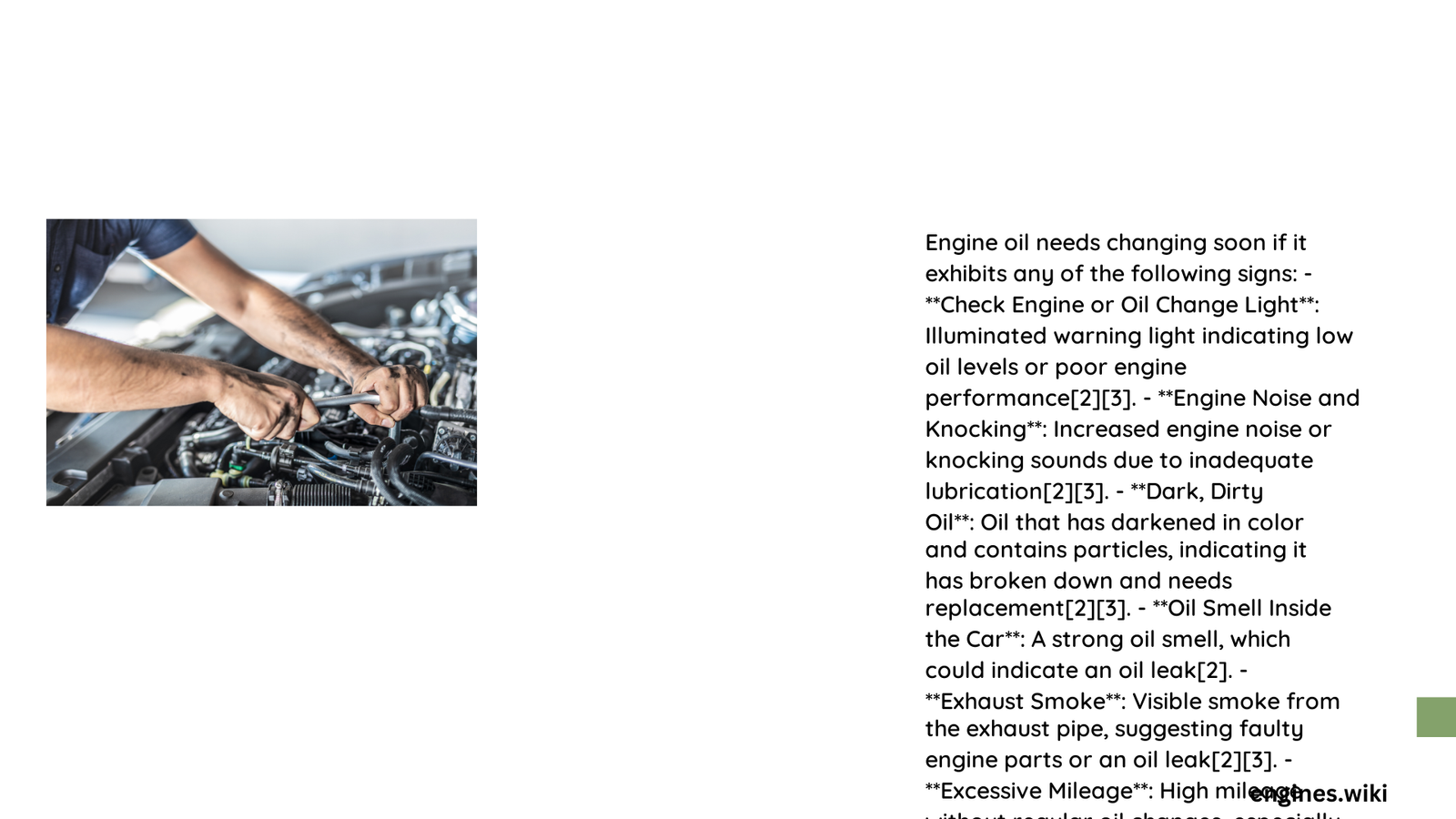Modern vehicles demand precise engine oil maintenance to ensure optimal performance and longevity. Recognizing when your engine oil needs changing soon is crucial for preventing costly mechanical damage, reducing friction, maintaining engine efficiency, and protecting your vehicle’s critical components from premature wear and potential catastrophic failure.
What Are the Visual Warning Signs?
How to Detect Oil Condition Through Color?
Fresh engine oil appears light amber and translucent, while aging oil transforms into darker, opaque shades. When your oil turns dark brown or black, it’s a clear indicator that replacement is imminent.
Oil Color Progression Table:
| Oil Stage | Color | Condition | Action Required |
|---|---|---|---|
| Fresh | Light Amber | Optimal | No Action |
| Aging | Dark Amber | Monitor | Check Soon |
| Degraded | Brown | Caution | Consider Change |
| Critical | Black | Urgent | Change Immediately |
What Warning Lights Indicate Oil Problems?
- Orange Oil Change Light: Gentle reminder for maintenance
- Red Check Engine Light: Critical system warning
- Blinking Dashboard Indicators: Immediate professional inspection needed
How Does Performance Signal Oil Degradation?

Can Engine Noise Reveal Oil Issues?
Increased engine knocking or unusual sounds often indicate insufficient lubrication. These noises result from increased friction between moving metal components, signaling that your engine oil needs changing soon.
What Performance Metrics Matter?
- Fuel Efficiency Reduction
- Decreased miles per gallon
- Engine working harder than normal
-
Increased fuel consumption
-
Temperature Management
- Engine overheating
- Inconsistent temperature readings
- Reduced cooling efficiency
When Should You Change Your Oil?
What Determines Oil Change Frequency?
Recommended Change Intervals:
– Standard Vehicles: 3,000-5,000 miles
– Modern Vehicles: 6,000-10,000 miles
– High-Performance Cars: Manufacturer-specific guidelines
How Do Driving Conditions Impact Oil Life?
| Driving Condition | Impact on Oil | Recommended Action |
|---|---|---|
| City Stop-and-Go | Faster Degradation | More Frequent Changes |
| Highway Driving | Slower Degradation | Standard Intervals |
| Extreme Temperatures | Accelerated Breakdown | Monitor Closely |
What Are Best Practices for Oil Maintenance?
How to Choose the Right Oil?
- Match manufacturer specifications
- Consider synthetic vs. conventional options
- Evaluate viscosity ratings
- Consult vehicle manual
What Tools Do You Need?
- Oil drain pan
- Socket wrench
- New oil filter
- Funnel
- Protective gloves
- Safety glasses
Expert Recommendations
Why Professional Inspection Matters?
Regular professional inspections can:
– Detect early warning signs
– Prevent expensive repairs
– Extend engine lifespan
– Maintain vehicle warranty
What Are Disposal Guidelines?
- Never dump used oil in environment
- Use certified recycling centers
- Follow local environmental regulations
Conclusion
Understanding when your engine oil needs changing soon requires vigilance, knowledge, and proactive maintenance. By recognizing warning signs and following recommended practices, you can protect your vehicle’s performance and longevity.
Reference:
– Letcher Bros. Auto Repair
– Machinery Lubrication
– Lndsolutions.org
